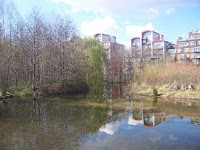Britain’s transition into a tertiary economy has been tough but since the 90’s economic growth has been both positive and steady. As the countries prosperity improves so does the living standard of its population and yet the gulf between rich and poor grows ever wider. Why is this so?
Professor Robert MacDonald’s research entitled 'Paradox of Place’ described how young people’s attachment to their social networks both ameliorated their position but paradoxically served to alienate them from mainstream culture making it perpetually more difficult to escape from the cycle of poverty.
MacDonald’s research served to counter many of the stereotypes and misconceptions we may have about many impoverished areas. His research centred on Kelby in Teeside (an area hit hard by both deindustrialisation and modernist construction). He found that people were getting jobs, they wanted jobs but the unfortunate matter of fact being that the jobs were undesirable and were generally being lost at the same rate of acquisition.
 Turkey factory; biggest employer in the area (undesireable work)
Turkey factory; biggest employer in the area (undesireable work)
MacDonald found that most people’s experience with education (the one thing our society prizes above all things and essential in escaping the cycle of poverty) was a bad one. Most didn’t finish school and from those that did under 10% left with at least 5 A–C GCSE grades. The poor standard of education in the area meant that attending students were ‘learning to labour’; no prospects presented themselves, no decent jobs to work toward.
Hit by the second heroin boom, in a poor area with poor jobs youngsters begin to see drug dealers appearing with fast cars, money, ‘bling’ etc. When the system has failed these people aids them with only token gestures and then shuns them for being impoverished, not achieving the expected then why should they comply? We are given the ‘American Dream’ as our goal the pinnacle of achievement the stick by which our lives are measured. Nice house, nice car, beautiful wife etc. But how are people supposed to attain this with little to no education no prospects and no respect? Is it any wonder that they see ‘alternative’ careers where they can achieve more than they could ever honestly? The system has failed them so why should they conform?
Social patterns are often more complex than we may think so to simply band round buzz words such as ‘community’ and ‘regeneration’ is irresponsible at the least. If we are to use these words then we must understand their meaning in the appropriate environment. If we are to work in these areas to actually help people who are struggling with the rigours of day to day life then we must be at our most astute, considered and sincerest state of mind. Our interventions must be delicate, understanding and informed by each sites unique situation. Under no circumstances should we be arrogant or pretentious ignoring the human element of place.


 I believe that fences, barriers items that are supposed to protect an area result in the opposite effect. Barriers can not stop the determined getting into a space where they want to go, instead they only serve to hinder and discourage those who we wish to use the space. If these Millennium Communities are precedent for future urban design I worry about their understanding and use of small urban spaces.
I believe that fences, barriers items that are supposed to protect an area result in the opposite effect. Barriers can not stop the determined getting into a space where they want to go, instead they only serve to hinder and discourage those who we wish to use the space. If these Millennium Communities are precedent for future urban design I worry about their understanding and use of small urban spaces. 










